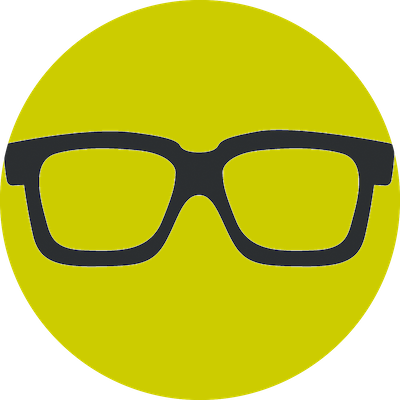Tens of thousands of busy people start their day with their personalized digest by Refind. Sign up for free and pick your favorite topics and thought leaders. Subscribe here.
453: quantum of sollazzo
#453: quantum of sollazzo – 18 January 2020
The data newsletter by @puntofisso.

Hello, regular readers and welcome new ones :) This is Quantum of Sollazzo, the newsletter about all things data. I am Giuseppe Sollazzo, or @puntofisso. I've been sending this newsletter since 2012 to be a summary of all the articles with or about data that captured my attention over the previous week. The newsletter is and will always (well, for as long as I can keep going!) be free, but you're welcome to become a friend via the links below.
I've recently published a Medium blog post on the topic "Confessions of a data scientist". This is the write-up of a panel at the Royal Statistical Society, where I and a few other public and private sector data leaders were asked to adjudicate a number of anonymous confessions of data science sins, coming from RSS practitioners. It was pretty fun.
Every week I include a six-question interview with an inspiring data person. This week, I speak with Maurizio Napolitano of Bruno Kessler Foundation. I've often mentioned his work in maps and advocating for open data, and his interview was pretty fun.
'till next week,
Giuseppe @puntofisso
Six questions to...
Maurizio Napolitano

An activity that is taking my time at the moment, but which at the same time loads me, is organizing the lessons of the geospatial analysis course for data science students at the University of Trento.
The course is here https://napo.github.io/geospatial_course_unitn/
It is a very "hands-on" course: I explain geospatial concepts, and immediately show in practice how they are applied using python notebooks. The lessons are every Friday, and ,at the end of each lesson I propose an exercise where, on the next lesson I present my solutions and I add new concepts.
It amuses me .. even if it takes away a lot of energy.
I often observe, fall in love with the project, and reinterpret it using data closer to me and sometimes reinvent something new.
I observe with pleasure everything that passes around the OpenStreetMap world and I am fascinated by the projects of Stamen, Mapbox, Development Seed, GIScience Research Group of the University of Heidelberg ... spaces that I am passionate about and with which I would very much like to find a way to collaborate ...
Then there are the friends, those you collaborate with, whom you look at with admiration, the passion with which you compare yourself and with whom you collaborate occasionally.
Among these I mention the work of Sheldon Studio by Matteo Moretti and the Quantum of Sollazzo newsletter :)
- what does it contain?
- with what license is it distributed?
- can I start playing it?
The advice therefore is to start from the most fascinating part: to understand how to represent them and then go deeper and deeper into the question.
By doing the path in reverse (= from representation to collection) you will only increase your motivation more and more and go very very far.
In conclusion: I make a big mess ... but ... I have a lot of good friends ready to help me. But I am sure of one thing: in Italian I always try to use the word "dati" otherwise someone might think that I am talking about calendars (in italian "data" means "date").
|
Become a Friend of Quantum of Sollazzo → If you enjoy this newsletter, you can support it by becoming a GitHub Sponsor. Or you can Buy Me a Coffee. I'll send you an Open Data Rottweiler sticker. You're receiving this email because you subscribed to Quantum of Sollazzo, a weekly newsletter covering all things data, written by Giuseppe Sollazzo (@puntofisso). If you have a product or service to promote and want to support this newsletter, you can sponsor an issue. |
Topical
Why we need to wear better masks
An interesting piece from Axios, showing in clear terms what research has been saying for some time, that an improved use of face masks could cut infections by a huge margin.

Poison in the Air
"The EPA allows polluters to turn neighborhoods into “sacrifice zones” where residents breathe carcinogens. ProPublica reveals where these places are in a first-of-its-kind map and data analysis."

The NFL Really Does Revolve Around Tom Brady
"Explore his connections to other quarterbacks through the touchdown-catching receivers they share."
By FiveThirtyEight.

Tools & Tutorials
Three decades of European government leaders
Datawrapper's CTO Gregor Aisch uses its scatterplot visualization with custom lines feature to show the tenure of European leaders.

How we created a 3D graphic of Great Zimbabwe
The Economist's Off The Chart newsletter has this great piece that tells about how they were inspired by the New York Times's blog post series in their use of photogrammetry for 3D modelling based on Blender and Three.js. Some links to open source code are also available.

Data thinking
Wordle and IP law: What happens when a hot game gets cloned
This isn't quite data, but I bet it will be of interest. ArsTechnica, in telling the story of Wordle clones here's quite a bit of complication in asserting intellectual property rights for games. And if you don't know what Wordle is, where have you been for the last month or two?!
Dataviz, Data Analysis, & Interactive
The list of 2021 visualization lists
Meta! By graphic guru Maarten Lambrechts, this is the "seventh edition of the list of visualizations, charts, graphics, maps, data and satellite journalism and science photography lists, version 2021."

Across the ASMRiverse
I've never quite got ASMR, but this blog post by Erin Davies, other than creating some pretty cool graphics about it, shows her workflow on how to collect data from YouTube and visualize it with R.

It’s time for a more sophisticated color contrast check for data visualizations
"The WCAG contrast requirements are flawed. Here’s what a new approach could mean for data visualizations."
Very interesting article by Datawrapper's Lisa Charlotte Muth on how the WCAG guidelines perform in comparison with the “Advanced Perceptual Contrast Algorithm” (APCA). Don't forget that Lisa, one of our Six Questions graduates, is currently writing a book on data visualization.

The Economist on Quadratic Voting
Quadratic Voting is a form of voting in which voters can also express a strength for their vote, so for example one could vote for a party but also say that they like that party 7 out of 10. The idea is that each voter can be allocated a number of credits that can be used in multiple ways.
The Economist has a good explainer alongside a real-life example in which they're asking readers to vote for a variety of themes, with the outcomes presented in a future article.

AI
Deep Learning Interviews book
"Hundreds of fully solved job interview questions from a wide range of key topics in AI".
AI unmasks anonymous chess players, posing privacy risks
"AI software can already identify people by their voices or handwriting. Now, an AI has shown it can tag people based on their chess-playing behavior, an advance in the field of “stylometrics” that could help computers be better chess teachers or more humanlike in their game play. Alarmingly, the system could also be used to help identify and track people who think their online behavior is anonymous."

quantum of sollazzo is also supported by ProofRed's excellent proofreading service. If you need high-quality copy editing or proofreading, head to http://proofred.co.uk. Oh, they also make really good explainer videos.
